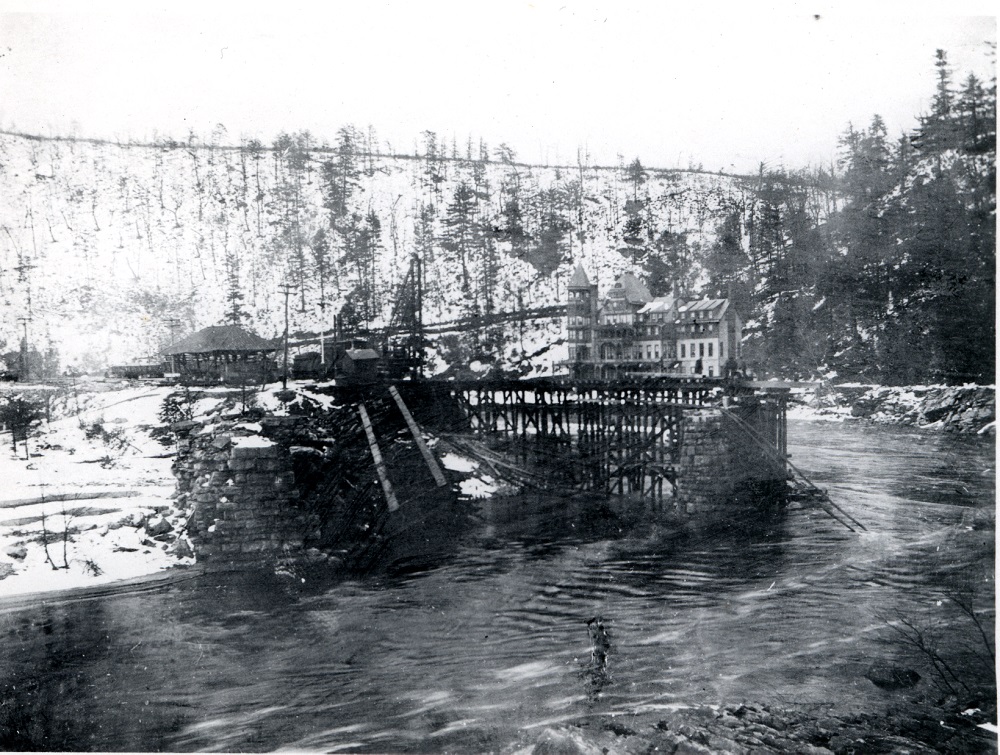
Downed bridge at Mauch Chunk
Frequent, ferocious floods seemed to come one after another on the Lehigh River in the early years of the 20th century. A severe flood hit on December 15, 1901 (see the #WaybackWednesday post on our Facebook Page), followed by one on February 28, 1902 that was made even worse one by the huge chunks of ice it drove down the river. The Mansion House Bridge in Mauch Chunk was swept away, as was this bridge which carried the Central Railroad of New Jersey’s tracks across the Lehigh at Glen Onoko. It was a portent of the decline of both the anthracite and the tourist businesses in “The Switzerland of America.”
In the 1880s, Glen Onoko Falls rivalled Niagara Falls as a destination. Lured by the promise of cool mountain breezes and spectacular scenery only a two-and-a-half-hour train ride from steamy summer Manhattan, people flocked to Mauch Chunk on the Lehigh Valley and New Jersey Central Railroads. Each line had its own station at Glen Onoko for the day trippers who came to climb the wooden stairs that led to lookouts to view the multiple waterfalls. (The CNJ’s pavilion-like station is visible in the photo.) For those who wished to linger, there was a footbridge (doubtless also destroyed) to the Hotel Wahnetah sitting in splendid isolation on the opposite river bank.
It took two years after the 1902 disaster to restore coal shipping from Mauch Chunk by canal boat and railroad. Jim Thorpe historian Vince Hydro dug into his files and found an October, 1902 newspaper article about two workers being hurt on the job while “rebuilding the Central’s railroad bridge.” A month later, the Mauch Chunk Coal Gazette reported “Divers are at work in the Lehigh river at Glen Onoko putting in new concrete piers to replace the old ones,” but it wasn’t until April 10, 1903 that the paper could report “The piers for the Jersey Central’s new bridge at Glen Onoko have been completed and work on the new structure will begin at once.” But the Hotel Wahnetah was already losing its luster, and was not rebuilt after burning to the ground in 1911.
The tourists returned when the trains did, and the Switchback Railroad remained a big draw for the town until the 1920s. Today, Jim Thorpe is again capitalizing on its history, scenery, access to the Lehigh River, and interesting shops. And the D&L Trail and the Reading and Northern railroad cross the Lehigh on a trestle a short distance from where the one that fell in the 1902 flood once stood.























Join the Conversation!